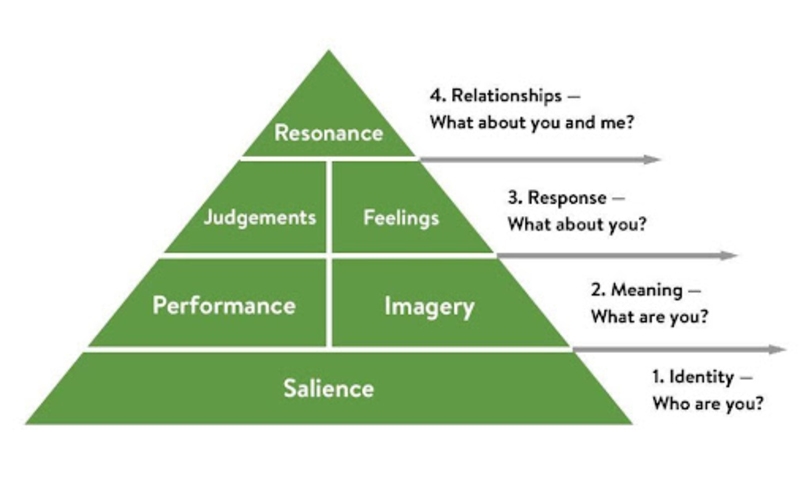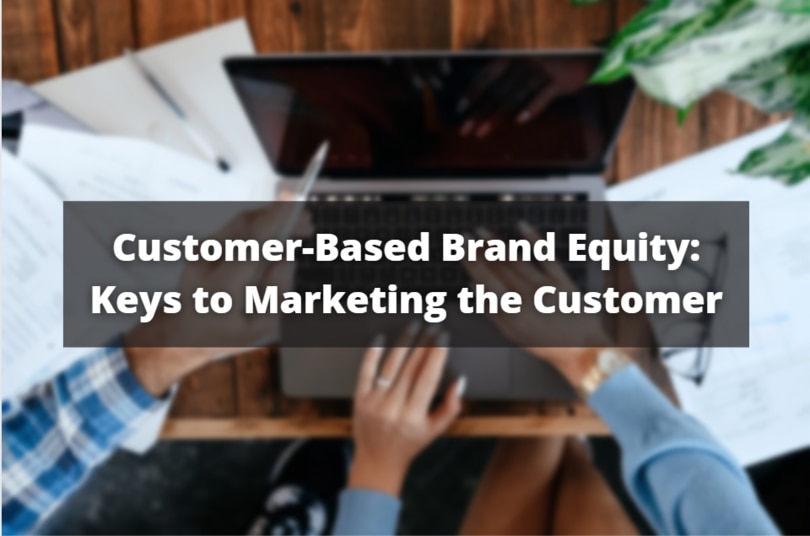A brand consists of much more than a trademark. A brand is a commitment to customers and potential customers. It's a guarantee of genuine excellence that customers expect from a supplier. However, it's also a promise of the feelings they'll experience from using those goods or services. None of the elements that go into creating a strong brand are as fragile and tricky to pin down as social worth. And yet, it's usually that social worth, rather than actual worth, that's the secret sauce driving first-class purchases and remarkable customer loyalty. Attempting to present social value, marketers invented the brand equity measuring system, which evaluates a brand's added value in customers' eyes. Businesses now strive to increase their social worth and gain the loyalty of clients who are prepared to invest top dollar in new products and services.
Defining Brand Equity
Brand equity shows the amount of power a brand name has in consumers' minds, as well as the benefit of having a well-known and well-recognized brand. Organizations build brand equity by providing exceptional experiences that encourage customers to choose them over industry rivals. This is accomplished through marketing that appeals to a target audience, fulfilling expectations and criteria when customers use the product, and focusing on loyalty and commitment.
The Difference Between Brand Awareness and Brand Equity
Brand equity has multiple facets, one of which is brand awareness. The degree of the brand's influence in consumers' minds determines the relevance of brand awareness in establishing brand equity. According to research, a solid brand awareness contributes to increasing brand choice, generating deeper consumer loyalty, and so improving brand equity. Brand awareness is the first stage in establishing brand equity and the foundation for a successful marketing plan. Because customers are usually not enthusiastic about discovering the quality of new companies and potentially losing money, repeatedly pointing out brand messages and values builds affinity, confidence, and readiness to purchase.
Keller's Brand Equity Model
Kevin Lane Keller, a Dartmouth professor, established the most famous brand equity concept, highlighting the importance of shaping the feelings connected with a company's products. You can change how people see your brand by building pleasant associations with your offer. The concept is designed as a brand equity hierarchy that starts with building a brand's identity and uniqueness and ends with developing significance and relationship with the core demographic. By knowing where your company is in the pyramid, you can get a better picture of how much brand equity you hold and what your following initiatives should be to effectively develop your brand in the customer consciousness.

It consists of four stages: 1. Brand identity: This is the first step in establishing brand recognition. People are unable to recognize your brand or distinguish it from competitor companies at this level, and it's critical to build solid brand identity through informing others about it. It serves as the pyramid's foundation because it is the essential step. It demonstrates the importance of developing a good image from the start in order to grow on it. 2. Brand meaning: After a brand has successfully captured the attention of its target audience, the following stage is for the company to deliver additional product information to its clients. Clients seek to learn more about how to utilise the product, what difficulties it can address, how to use it, and so on. At this point, the buyer is interested in learning more about the business. The two main aspects of brand meaning are brand performance and brand visuals. The most critical factor that decides will your organisation do or die is its performance. Many well-known brands, such as Samsung, Microsoft, Mercedes, and others, have developed strong brand equity due to their outstanding performance. The perception that customers have of a company is known as brand imagery. Customers develop a mental image of a brand based on how they desire the product to be. Buyers want a software brand to be relatable and functional, while they expect a fashion brand to be comfy and attractive. 3. Brand response: What is a customer's reaction after buying a product from your company? This is the point at which your brand must stay true to the reputation you worked so hard to establish earlier in the pyramid. Customers will not respond positively if the high-end goods you're offering don't meet their expectations in terms of quality. On the other hand, if you continuously deliver excellent quality, you will maintain your reputation and have a significant possibility for progress and expansion. You must always ensure that you are carrying on your promises, given the importance of how your clients react to your items. One of the most destructive things that a company can face is failing to meet the expected level, and you may not be able to bounce back from a long time of falling short. 4. Brand resonance: The last and most challenging level is brand resonance. This is the point at which the client and the brand have developed a strong bond. Climbing all the way to the top of the pyramid is demanding, but those who succeed will be lavishly rewarded. Rare companies that reach this height are able to build a network around product ownership - to put it another way, consumers of the products will strongly identify with one another because they are passionate about the same brand. At this level, customers are incredibly loyal, and they will typically buy just about whatever the company produces as long as it meets the footsteps of past models or goods.
How to apply this model to build customer-oriented brand equity
1. Identity: Study your market to learn more about how consumers see your brand and discover if there are specific market categories with different demands and relationships with your brand. Then, find out how your clients refine their options and choose between your business and competitors. How do your customers make their decisions when it comes to purchasing your goods? How effectively does your brand stick out at key selection process points? You sell your product when it meets a specific customer's wants; that's your unique selling proposition or USP. After analysis, you should know whether your customers see your brand the way you want them to or if there are certain perceiving issues that you need to discuss. Specify the steps you'll need to do to resolve the discovered concern.
2. Meaning: The Kano Model and the Critical to Quality Tree are two standard methods for analysing customer behaviour. The analysis' findings can be used to create a top-performing offering. After that, consider what kind of engagement you want your users to have with your service. Create a brand image that reflects both performance and appearance. Recognize cracks between your current place and where you want to be, and think of ways to close them. 3. Response: Customer feedback could come through platforms like Freshdesk or Zendesk, as well as NPS surveys and internet reviews. These channels provide a great deal of information for gathering client opinions on a large scale. Think about the questions posed regarding your customers' evaluation: ● What can you do to increase your product's or company's objective and subjective quality? ● What steps can you take to improve your brand's reliability? ● Does your marketing approach carry out the relevance of your brand to customers' wants? ● How does your company stack up against the competition? After that, consider the six brand emotions carefully (warmth, fun, excitement, assurance, social approval, and confidence). Which of these feelings, if any, does your existing marketing strategy concentrate on? What can you do to make your consumers feel better? Determine what activities you need to do as a result of the questions you've asked. 4. Resonance: The purpose of the pyramid's last level is to strengthen each part of a customer relationship. For instance, to build behavioural loyalty, bring in customer reward programs or freebies with every transaction. Think about what you can do to honour clients who are brand advocates. What activities could you arrange to encourage customers to become more involved with your brand? Make a list of possible actions. Key Points ● You will have a considerably higher chance of growing your brand if you can ramp up your brand's reputation in clients' eyes. ● Identity, Meaning, Response, and Resonance are the four tiers of this model, shaped like a pyramid. ● A company's brand identity is how you want customers to see you. ● People will be grateful for their choices if they understand the meaning of your brand, and they will return over and over again. ● In a circular loop of efficacy, branding drives engagement, which drives brand building. ● Brand resonance refers to a network of devoted customers surrounding a product or service.

4 Significant Advantages of Strong Brand Equity
1. Brands make it easier for customers to make decisions.
When the human mind identifies a particular brand, it makes a purchase decision based on previously stored information. Imagine the absence of brands throughout the globe. With every new purchase, we would have to evaluate each deal and the qualities of each unique product in order to find a fitting and most convenient option. Most would fail to accept this endeavour as part of our regular shopping routine.2. Brand equity minimises liability.
Another major function of a brand is to lower consumers' risk perception while purchasing a product. Assume you're in need of a new lipstick. You conduct some internet research or go to a shop, and the salesperson offers you two similar lipsticks - one of a famous brand and one of a brand you've never heard of. There is a big chance you'll choose the first one. The basis for this is a correlation between high brand equity and perception of quality. This is a popular strategy adopted by customers to limit their risk when purchasing a product. Although that perception could be flawed from the consumer standpoint, it shows the advantage of brand equity.3. You can put a premium price on your products/services.
The proportion by which a product's retail price surpasses or falls short of a benchmark price is defined as price premium (aka relative price). You can put a higher price on a product and raise your premium percentage over the industry average when your brand equity is stronger. This is a valuable metric to use when evaluating the profitability of your product.4. As a business, you have a stronger impact.
With your increasing earnings and market domination, you can find yourself in a privileged position. For example, you can utilise your strong brand equity to build new relationships or negotiate better supplier rates. This could lead to partnerships, joint ventures, or investment opportunities you wouldn't have otherwise.Protecting Brand Equity
A brand's equity is perhaps its most valuable asset; you put a lot of money into it - protect it.
Your local advertisers are hired to produce material that sells the product. They want to do so quickly and efficiently. You'd like them to follow the brand standards. These two requirements can occasionally clash. A company that spends a fair amount of time and money creating beautiful key visuals expects them to be used effectively in order to benefit the company, and you need to make sure to surround yourself with personnel that understands the importance of it. Customers demand a particular level of service from your organization, and it helps you if they know that quality will be met regardless of where they engage with your company.





1 Comment
Such a valuable piece of informational and statistical advice.
The first line itself jolted the way I think about branding.
Kudos to Mitko and the Growth Hackers team for putting up such insightful articles consistently.